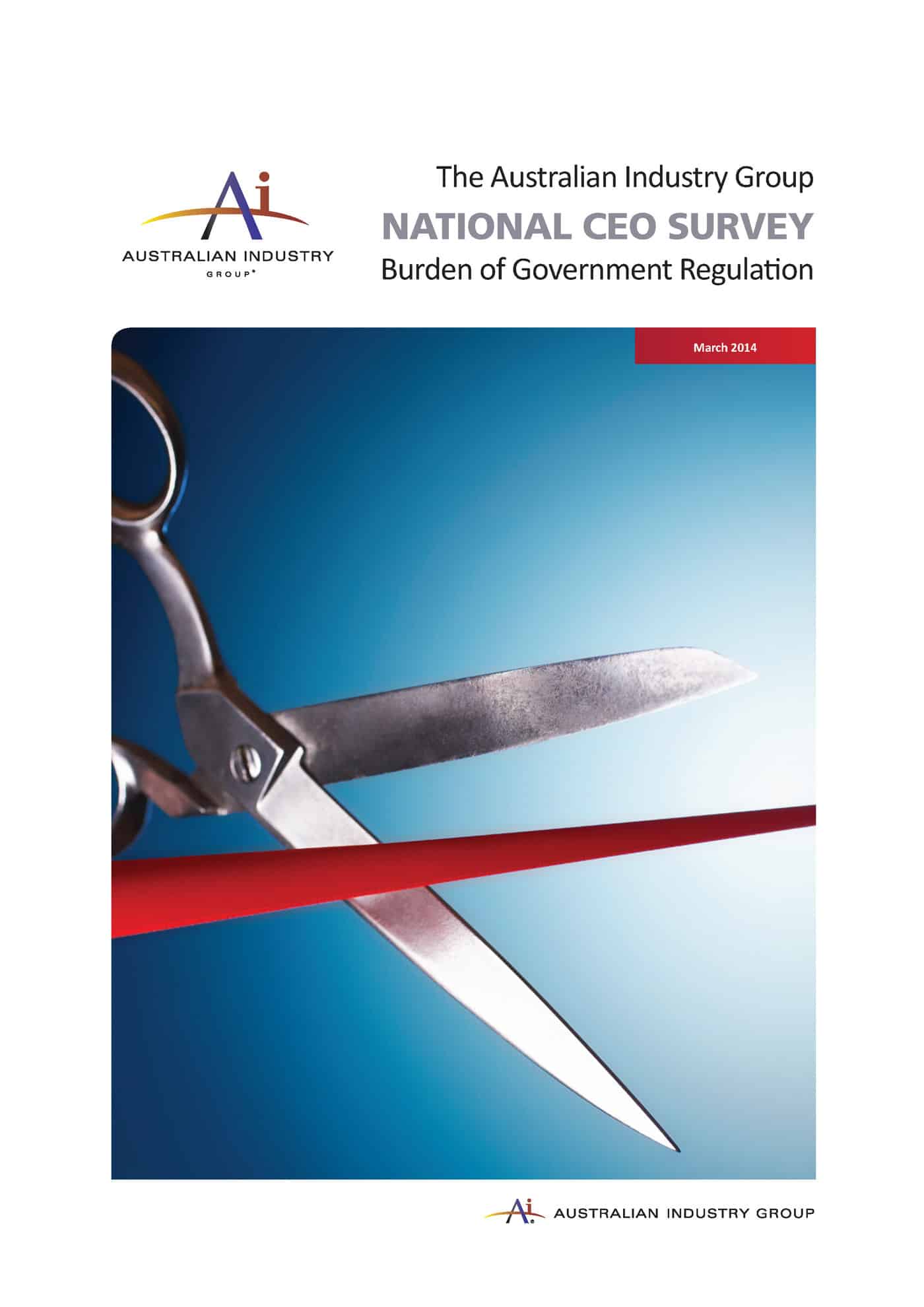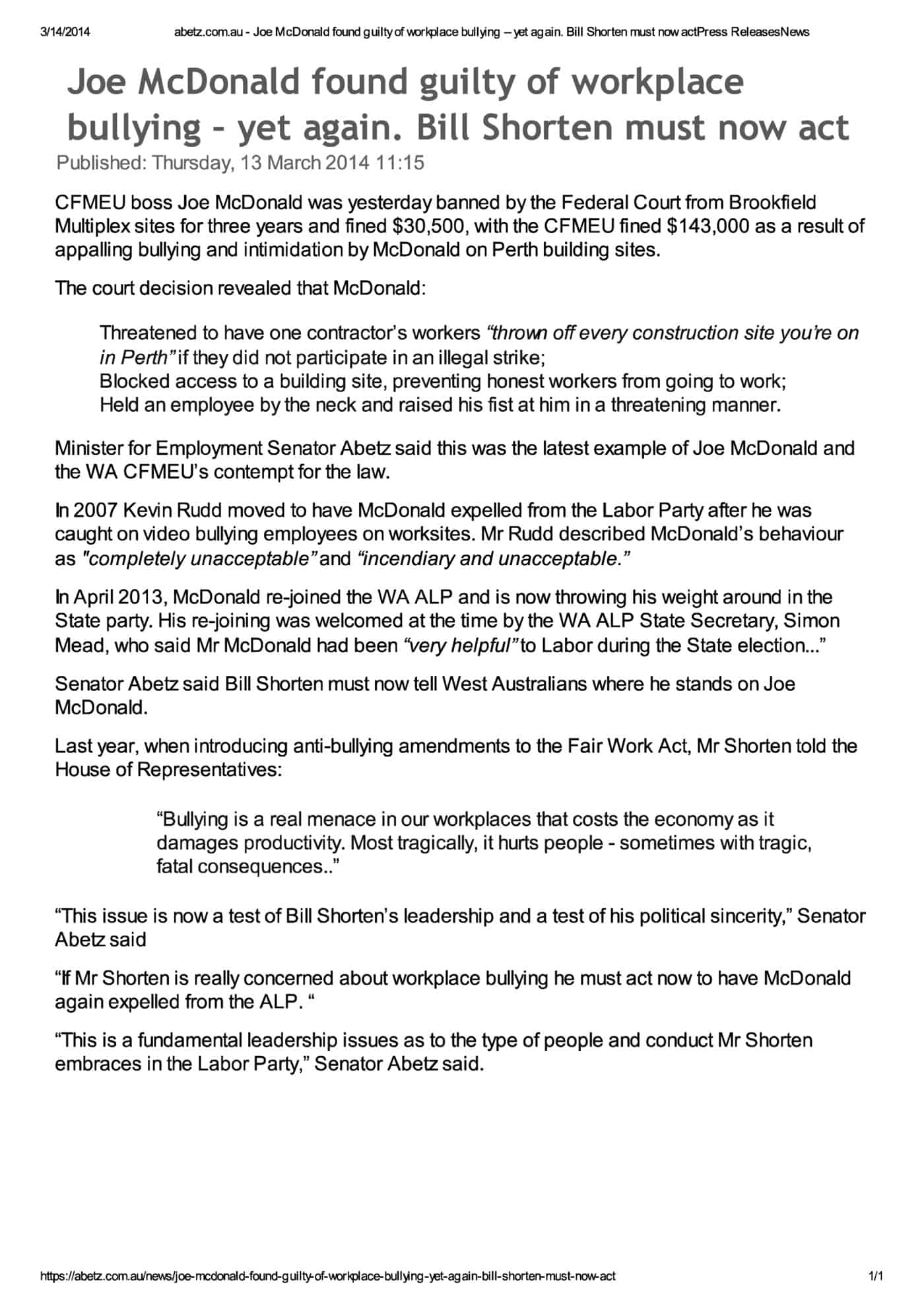Several weeks ago there was a stir in the OHS sector in Victoria, Australia.
Category: politics
CEO survey shows odd attitude to OHS
 One has to be very careful with surveys, particularly those involving business confidence or surveys of an organisation’s membership base. These are often surveys of perception which may not correlate with reality and can be used as an excuse to lobby government or set an agenda rather than determining a societal truth. A recent example of this type of survey seems to have been produced by the Australian Industry Group entitled “Burden of Government Regulation“. The AIGroup’s media release accompanying the report states that
One has to be very careful with surveys, particularly those involving business confidence or surveys of an organisation’s membership base. These are often surveys of perception which may not correlate with reality and can be used as an excuse to lobby government or set an agenda rather than determining a societal truth. A recent example of this type of survey seems to have been produced by the Australian Industry Group entitled “Burden of Government Regulation“. The AIGroup’s media release accompanying the report states that
“Over 83% of employers surveyed listed regulation related to industrial relations and occupational health and safety as a significant regulatory burden in 2014.”
Lessons from Royal Commission into Home Insulation Program
Australia’s Royal Commission into the Home Insulation Program (HIP) demands the attention of all occupational health and safety (OHS) professionals, primarily, because a job creation and economic stimulus program was so poorly planned at the highest level of government, that it seems to have established a culture that led to workplace deaths. However the Royal Commission is already revealing information that shows how OHS is misunderstood by decision-makers, a situation that still persists in many jurisdictions and will only change by watching the Royal Commission carefully and analysing this information through the perspective of workplace safety.
State of Knowledge
The Royal Commission has been investigating when the workplace deaths in New Zealand from using metal staples with foil insulation were known by the Australian Government. In OHS-speak, it is trying to determine the state of knowledge on this workplace hazard in the decision-making process. The deaths of four young Australian workers prove that the state of knowledge was inadequate however it is well established that Australia and New Zealand operate independently and that, although there are legislative similarities, it is rare for a death in one country to generate regulatory change in another. (One could look to the quad bike safety issues for an additional example.) The recent legislative changes in New Zealand may indicate that they listen to Australia more than vice versa.
Senator Abetz oversteps on workplace bullying claim
 Anyone dealing with occupational health and safety (OHS), or in any profession, knows to be careful with one’s words in public. This is particularly so when one is dealing with mental health issues or claims of workplace bullying. This week Senator Eric Abetz, Australia’s Workplace Relations Minister, seems to have overstepped the mark by misrepresenting some Federal Court Orders as related to workplace bullying, when the Court made no such statement. This could simply be dismissed as political hyperbole in the heat of the moment but this was no off-the-cuff remark. He headlined his media release on 13 March 2014 as:
Anyone dealing with occupational health and safety (OHS), or in any profession, knows to be careful with one’s words in public. This is particularly so when one is dealing with mental health issues or claims of workplace bullying. This week Senator Eric Abetz, Australia’s Workplace Relations Minister, seems to have overstepped the mark by misrepresenting some Federal Court Orders as related to workplace bullying, when the Court made no such statement. This could simply be dismissed as political hyperbole in the heat of the moment but this was no off-the-cuff remark. He headlined his media release on 13 March 2014 as:
“Joe McDonald found guilty of workplace bullying – yet again. Bill Shorten must now act”.
According to Safe Work Australia, an organisation within Senator Abetz’s portfolio, workplace bullying is defined in the most recent national guide as
“repeated and unreasonable behaviour directed towards a worker or a group of workers that creates a risk to health and safety.” (page 2)
Nowhere in the Federal Court orders* is workplace bullying, or any other bullying, mentioned and the Federal Court has not found Joe McDonald guilty of workplace bullying. The best that can be said is that Joe McDonald has a history of intimidation on construction sites and that this has created tense relations between the workforce and employers (perhaps a confused safety culture) and generated delays in construction.
Does this all matter? Yes
Workplace mental health deserves more attention
Mental health needs in the workplace has been an evolving area of study and application and has been followed by the SafetyAtWorkBlog since its inception. Several recent statements and reports in Australia have shown that the subject continues to be discussed but not by those who can make the substantial social change, the Government, partly due to a lack of the type of evidence needed by Government to justify the change.
Mental Health is the core element of almost all the contemporary workplace hazards that are categorised as psychosocial. This includes stress, bullying, fatigue, suicide, work/life balance, and many more. Each of these categories are important but most reporting and a lot of the health promotion initiatives in the workplace focus on the manifestation of mental health instead of the source.
On February 21 2014 the chair of the
Parliamentary inquiry discusses OHS but no one noticed
Australia’s politicians, trade unionists, businesses and media are gearing up for a tumultuous year in industrial relations with the controversial establishment of a Royal Commission into trade union corruption. This royal commission is broad-ranging but targets the construction unions, particularly the Construction Forestry Mining and Energy Union (CFMEU) and thus the construction unions’ conduct with regard to allegedly using occupational health and safe as a cover or excuse for industrial action. This royal commission has a strong element of party politics and ideologies and has overshadowed other action in the Australian Parliament where OHS is being discussed.
On 6 February 2014 the Education and Employment References Committee of the Australian Senate continued its inquiry into the Government’s approach to re-establishing the Australian Building and Construction Commission (ABCC) through the Building and Construction Industry (Improving Productivity) Bill 2013. One of the terms of reference for this inquiry is
“whether the provisions of the bills relating to occupational health and safety in the building and construction industry are adequate to protect the health and safety of employees and contractors in the industry”.
On February 6 the inquiry had some heated discussion on OHS and the construction industry that deserves a closer look.
Construction association sees red tape instead of safety
Further to yesterday’s article about the Model Health and Safety Management Plan (MHSMP) being required by the Construction Compliance Code Unit (CCCU) in the Victorian Government, SafetyAtWorkBlog was provided with a copy of the submission of the Victorian Construction Safety Alliance* (VCSA). Tony Marino, the Chair of the VCSA, has granted permission for the covering letter to be quoted.
The covering letter to the submission made four major points:
- “Overall the requirements of the Model Health and Safety Management Plan (MHSMP) and Implementation Guidelines are excessive and require significant amount of reporting duplication, i.e. red tape. VCSA was of the opinion government agencies wanted to reduce red-tape.
- VCSA Suggest the CCCU has a MOU with other relevant agencies to receive safety data produced and sought by the Implementation Guidelines.
